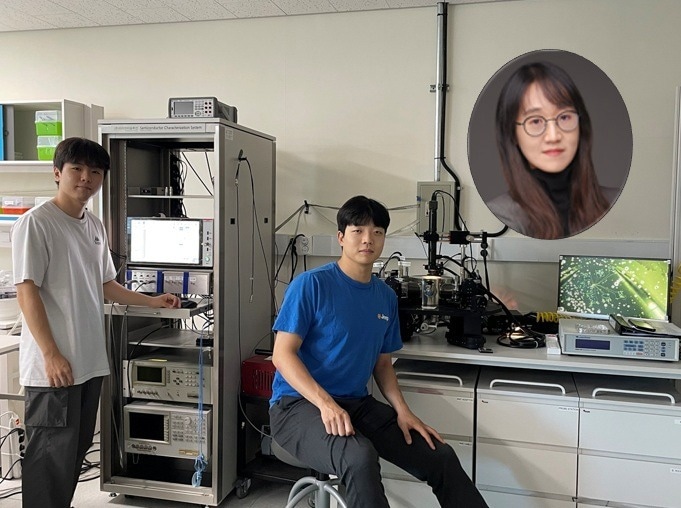Reviewed by Frances BriggsAug 19 2025
KAIST engineers have built a hyper-sensitive self-powered photodetector, using a novel PN junction in atomically thin MoS2. The device delivers record light sensitivity without external power or doping.
 (From left) Ph.D candidate Jaeha Hwang, Ph.D candidate Jungi Song, Professor Kayoung Lee from Electrical Engineering. Image Credit: Korea Advanced Institute of Science & Technology
(From left) Ph.D candidate Jaeha Hwang, Ph.D candidate Jungi Song, Professor Kayoung Lee from Electrical Engineering. Image Credit: Korea Advanced Institute of Science & Technology
Photodetectors convert light into electrical signals, powering applications from cameras to biosensors. But two-dimensional semiconductors such as molybdenum disulfide (MoS2), just a few atoms thick, are notoriously difficult to modify. Traditional “doping” methods that tune semiconductor properties often damage their delicate structure, limiting performance. Conventional silicon sensors, meanwhile, struggle with low light responsivity.
The KAIST team, led by Professor Kayoung Lee of Electrical Engineering, has now sidestepped these issues. By designing a photodetector that forms a PN junction without doping, the researchers created a device that can generate electrical signals directly from light, with no external power source required.
PN junctions, the interface of p-type (hole-rich) and n-type (electron-rich) regions, are central to photodetectors and solar cells, directing current when illuminated. They are usually created through doping, but this is nearly impossible in atomically thin materials.
To get around this, the KAIST team introduced two key design features:
A "partial gate": By applying an electric field only to part of the MoS2 layer, one side acts like p-type and the other like n-type. This mimics a PN junction without needing doping.
A Van der Waals bottom electrode: Instead of bonding tightly and disturbing the semiconductor lattice, the electrode attaches softly via van der Waals forces. This preserves MoS2’s original structure while enabling efficient charge transport.
Normally, to make a perfect PN junction, a technique known as "doping" is necessary, which includes deliberately introducing impurities into the semiconductor to change its electrical characteristics. However, because two-dimensional semiconductors like MoS2 are only a few atoms thick, typical doping methods might harm the structure or degrade performance, making it challenging to build a perfect PN junction.
This novel technique enabled the team to create a high-performance PN connection without doping. As long as there is light, the gadget can create extremely delicate electrical signals, even without an external power supply.
The novel photodetector achieved a light detecting sensitivity (responsivity) of 21 A/W, which is more than 20 times greater than powered conventional sensors, 10 times higher than silicon-based self-powered sensors, and more double the current MoS2 sensors. This degree of sensitivity allows it to be used instantly with high-precision sensors capable of detecting biosignals or working in low-light conditions.
We have achieved a level of sensitivity unimaginable in silicon sensors, and although two-dimensional semiconductors are too thin for conventional doping processes, [they] succeeded in implementing a PN junction that controls electrical flow without doping.
This technology can be used not only in sensors but also in key components that control electricity inside smartphones and electronic devices, providing a foundation for miniaturization and self-powered operation of next-generation electronics.
Kayoung Lee, Professor, Korea Advanced Institute of Science & Technology
The breakthrough demonstrates not just a new type of photodetector, but also a broader approach to designing self-powered, miniaturized electronics.
Journal Reference:
Hwang, J., et al. (2025) Gated PN Junction in Ambipolar MoS2 for Superior Self-Powered Photodetection. Advanced Functional Materials. doi.org/10.1002/adfm.202510113.